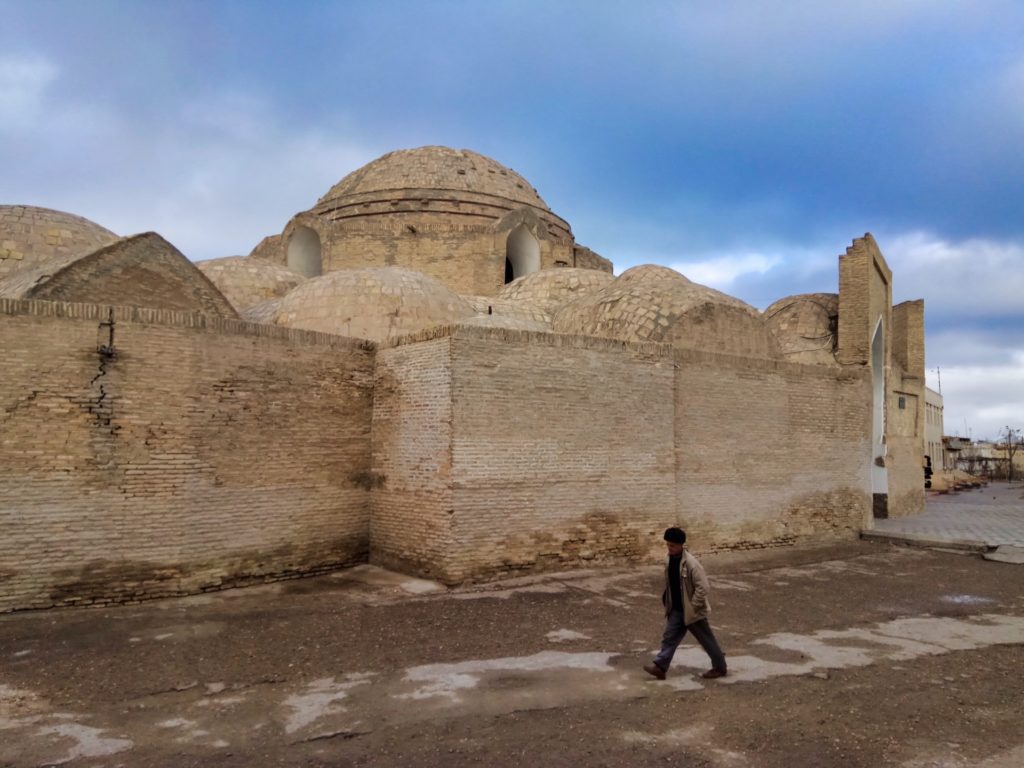
The Toki Zargaron Trading Domes were a major hub of the Great Silk Road. They were described by Khafizi Tanysh, a 16th century chronicler, as the largest of all existing arcades in Bukhara. Photographer: Adrian Liberto
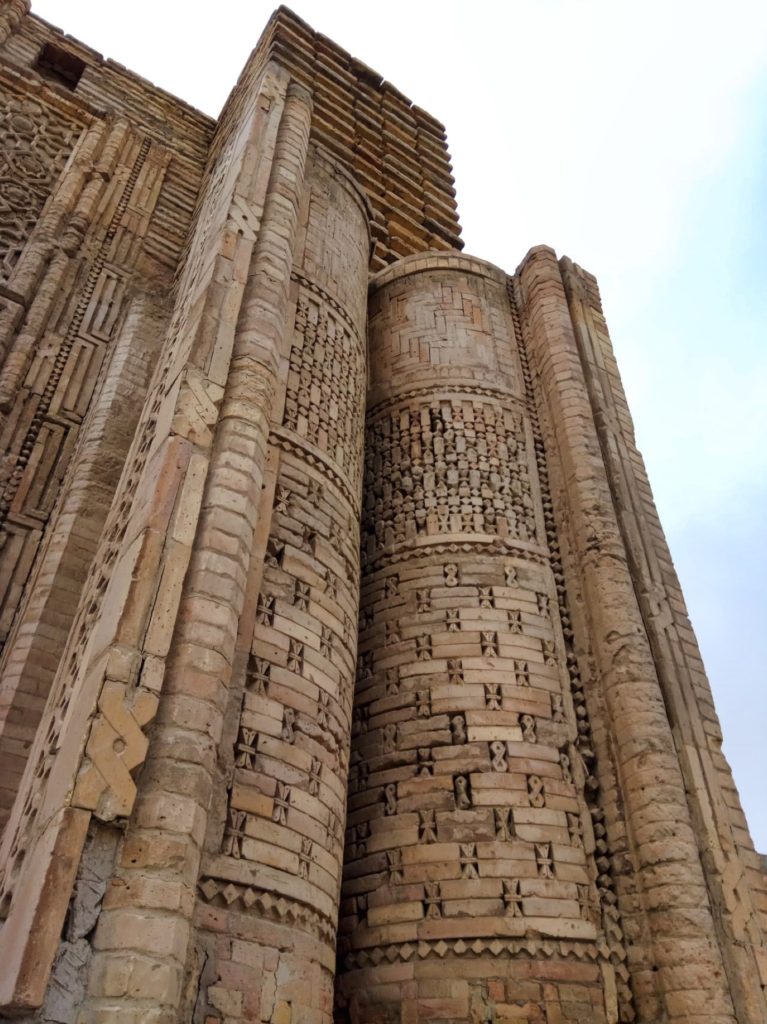
The intricate walls of the Magoki Attori Mosque. Photographer: Adrian Liberto
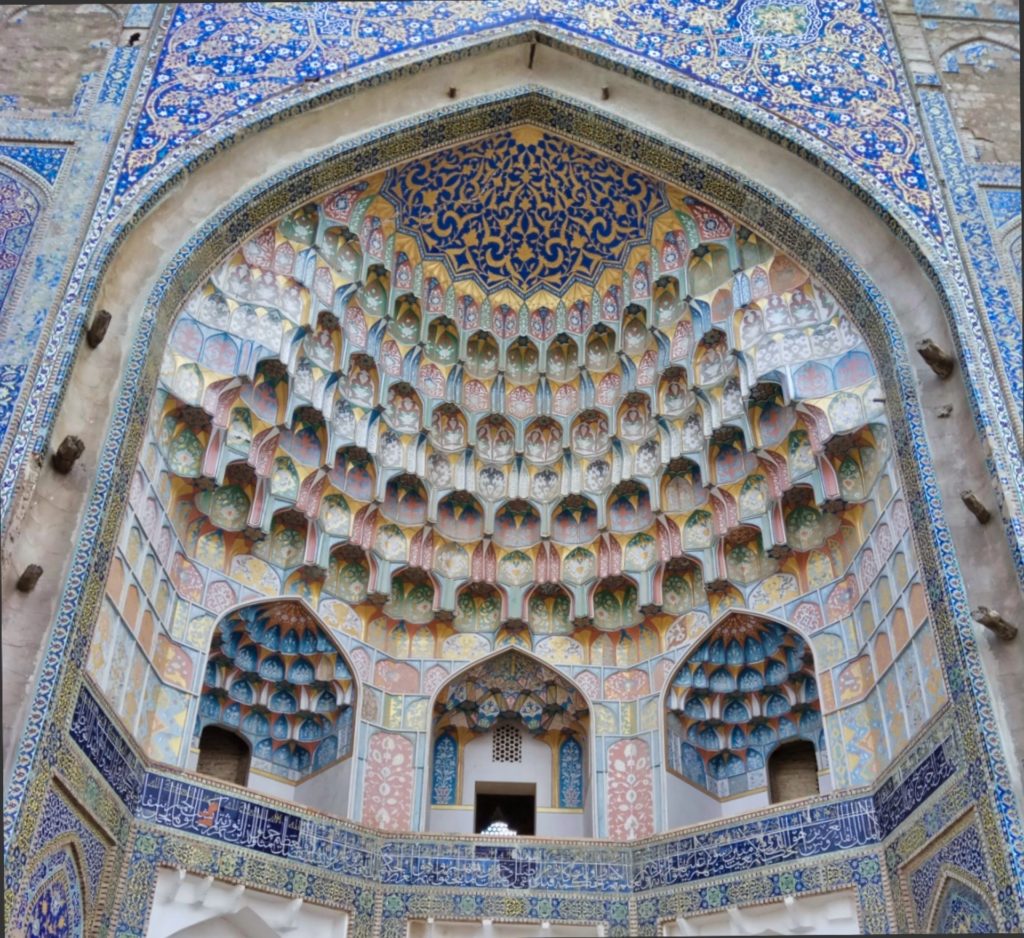
The amazing portal of the Nadir Divan Begi Khanaka. The building was originally built as a caravanserai, however, the imam officiating the opening ceremony unexpectedly called it a madrasah, so the portal, side towers, loggias, and students quarters had to be added on. Photographer: Adrian Liberto
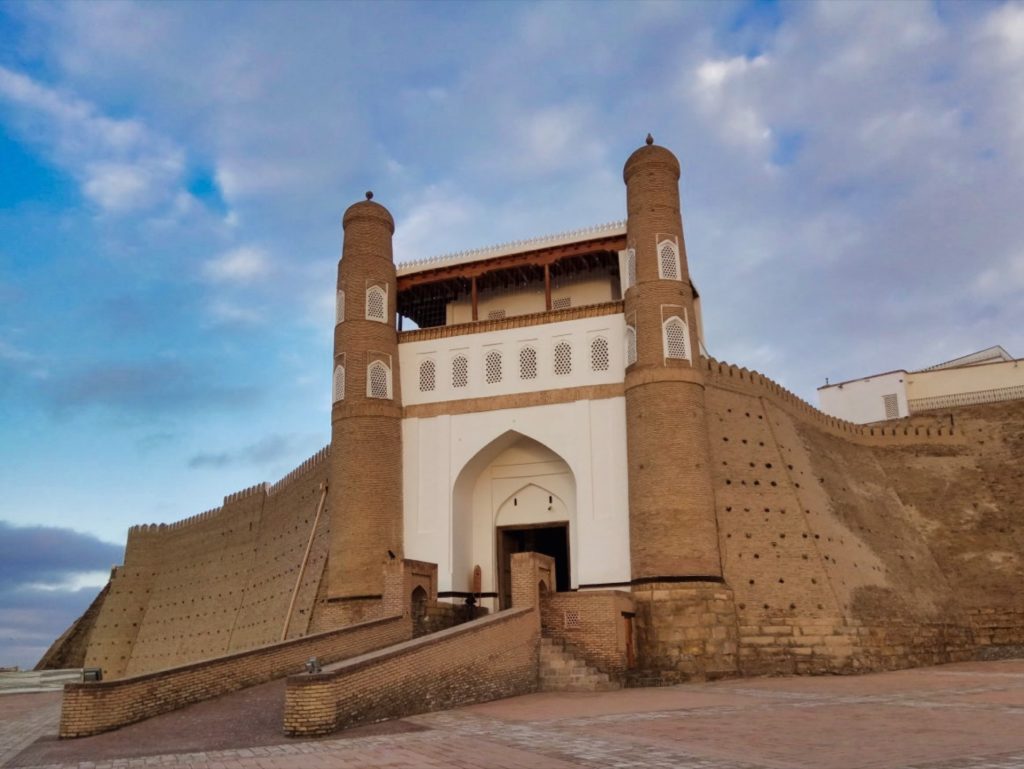
The Arc of Bukhara is a fortress that dates back to the 5th century. It fell to the Russians in 1920 and is now a history museum. Photographer: Adrian Liberto
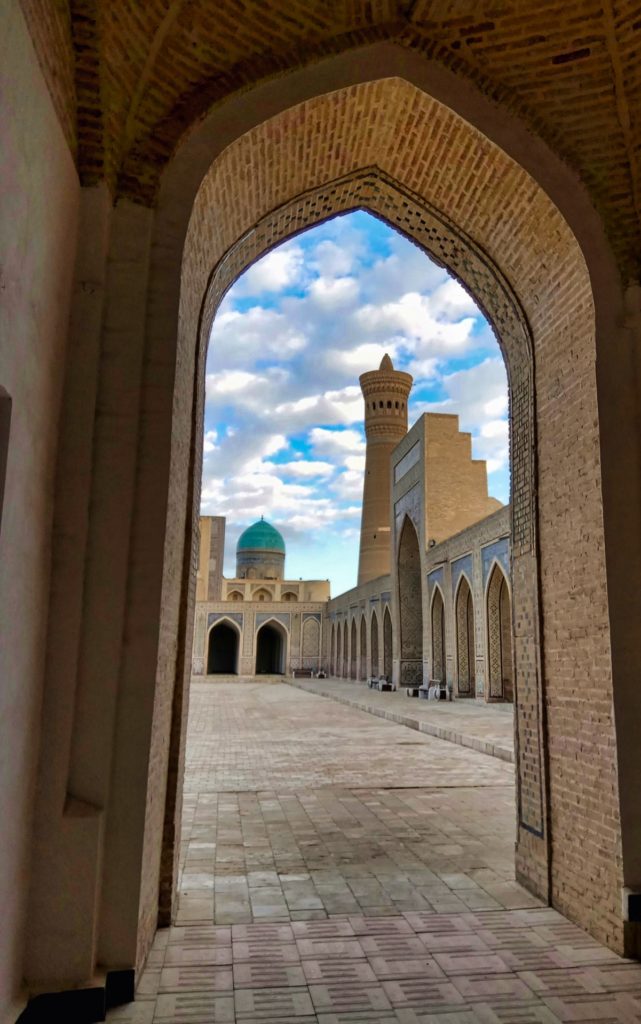
A religious hub, since 713, the Po-i-Kalan complex was mostly rebuilt after the siege of Bukhara (1121) by Genghis Khan, which left much of the town in ruins; the Kalan Minaret, however, was assiduously defended during the siege and survived the onslaught. Photographer: Adrian Liberto
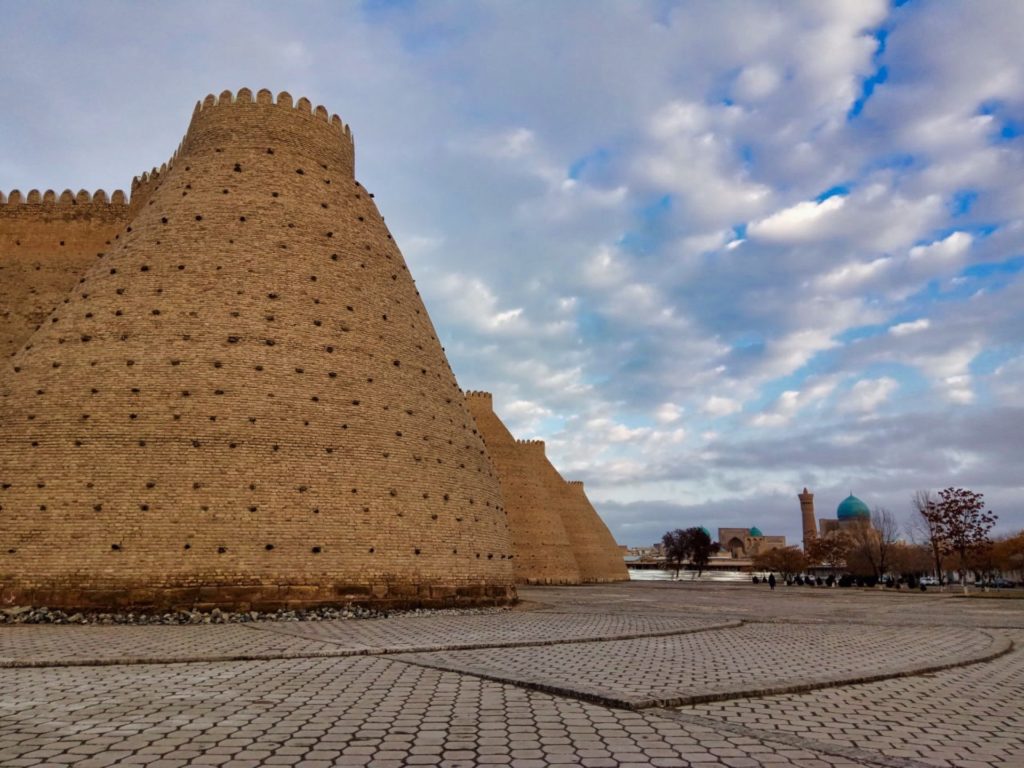
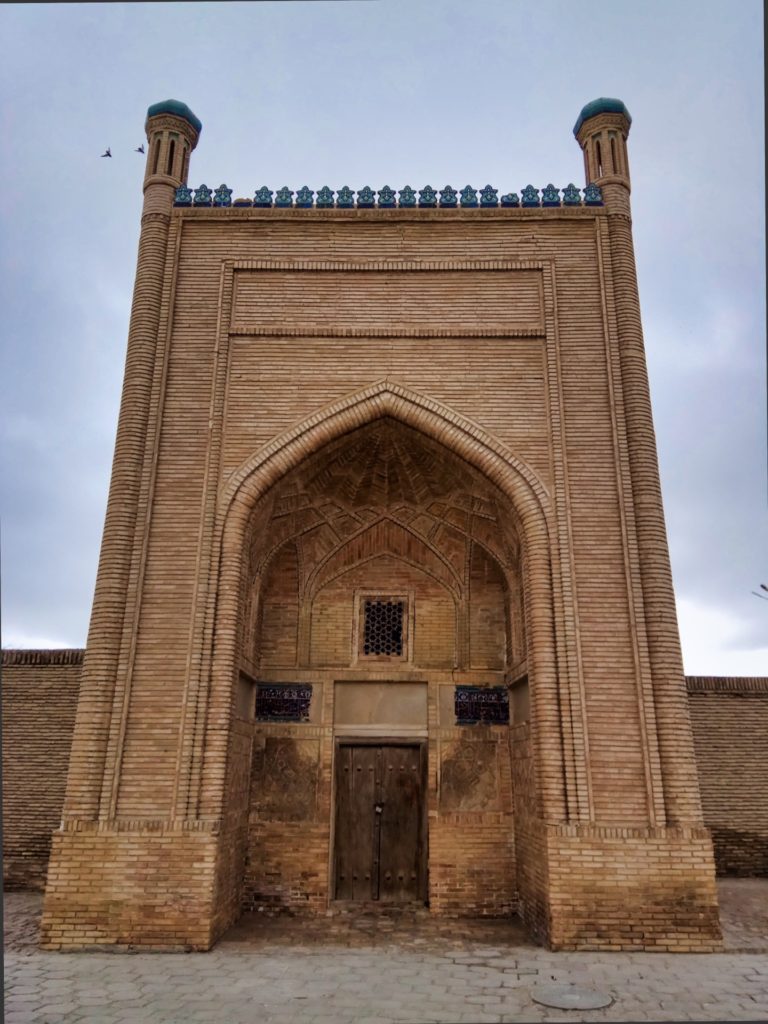
Evidence suggests that the Magoki Attori Mosque, Bukhara, built around the 9th century was constructed on the site of a Zoroastrian temple. It is now used as a carpet museum. Photographer: Adrian Liberto
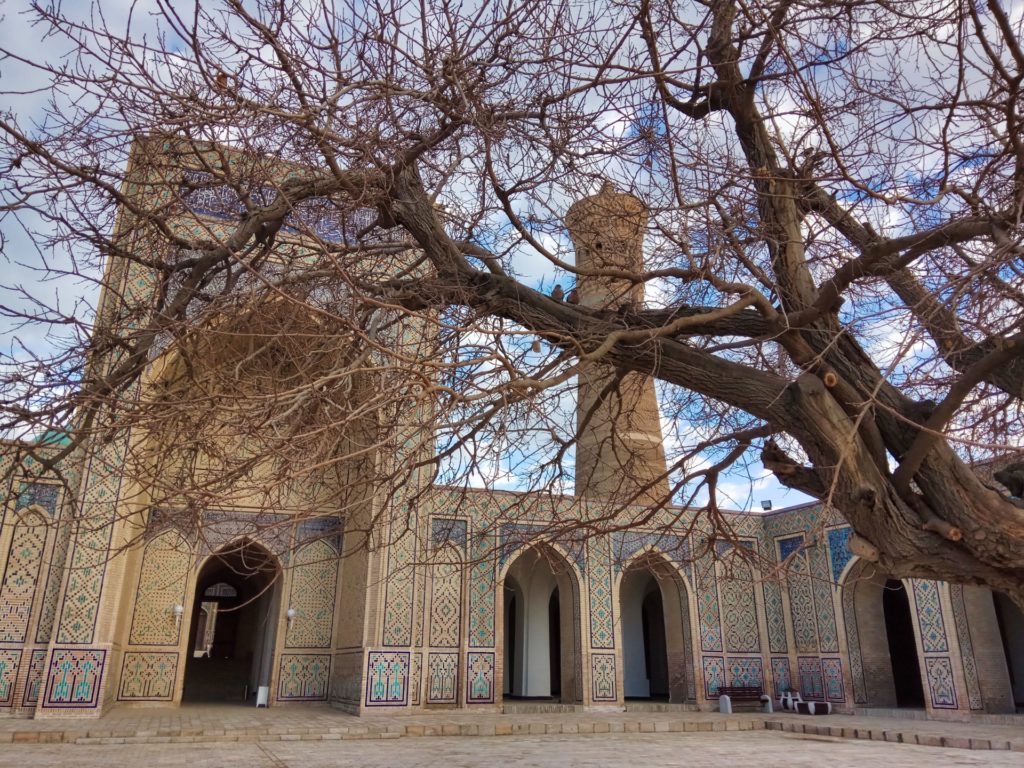
The Kalan Minaret, Bukhara, is also known as the Tower of Death, because for much of its history it doubled-up as a means of execution; criminals were thrown from the top. Photographer: Adrian Liberto
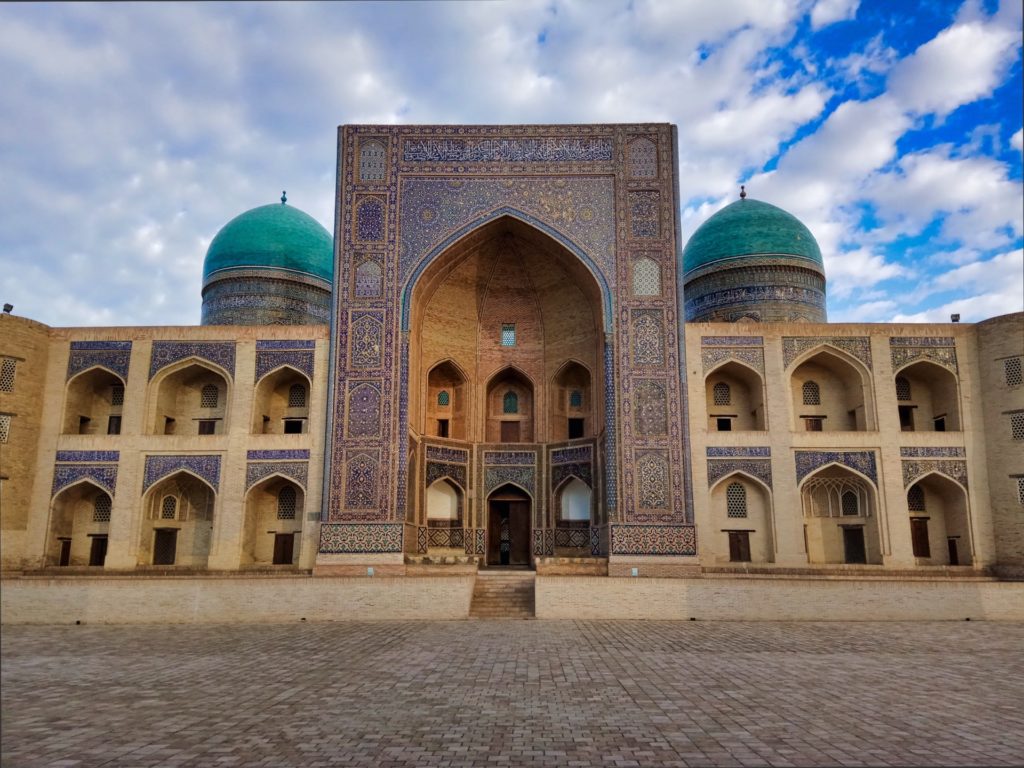
The Mir-i Arab Madrasah (c. 1535), Bukhara, possibly owes its construction to Sheikh Abdullah Yamani of Yemen, one of the spiritual mentors of the Shaybanids. Photographer: Adrian Liberto

Nadir Divan Begi Khanaka, Bukhara, built in 1622 was Sufi educational hostel or madrasah. Photographer: Adrian Liberto
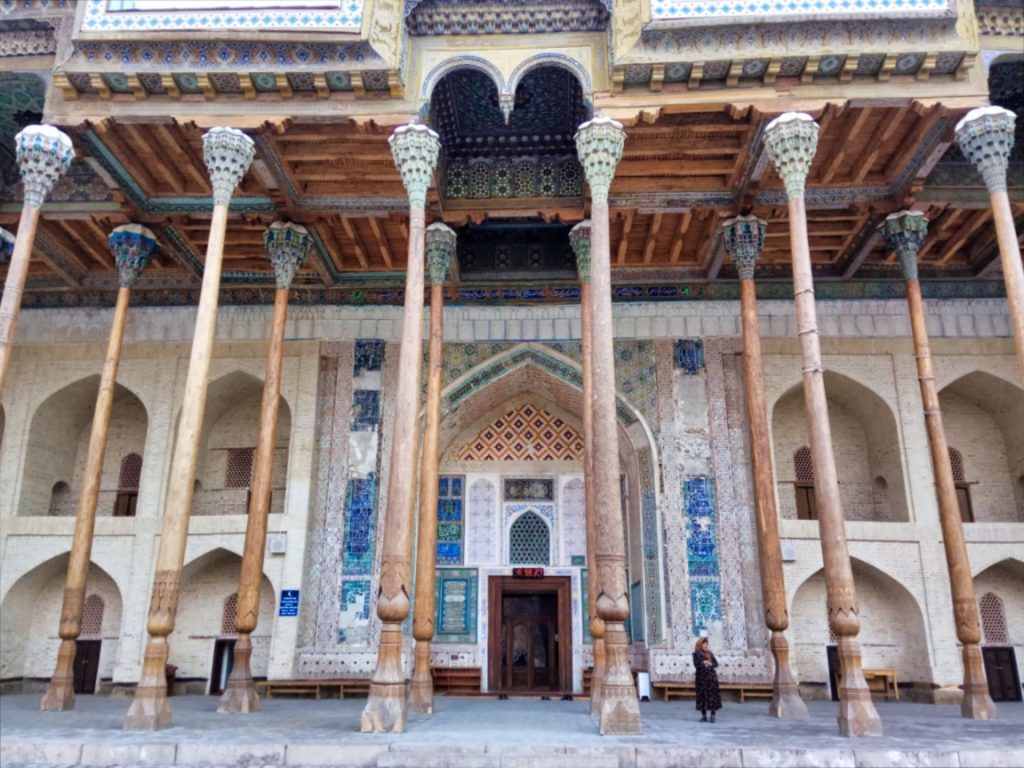
The Bolo Haouz Mosque, built in 1712, possesses both mystery and elegance and contrasts with the austere Bukhara fort it faces. Photographer: Adrian Liberto


